Carpet Beetle Identification & Control
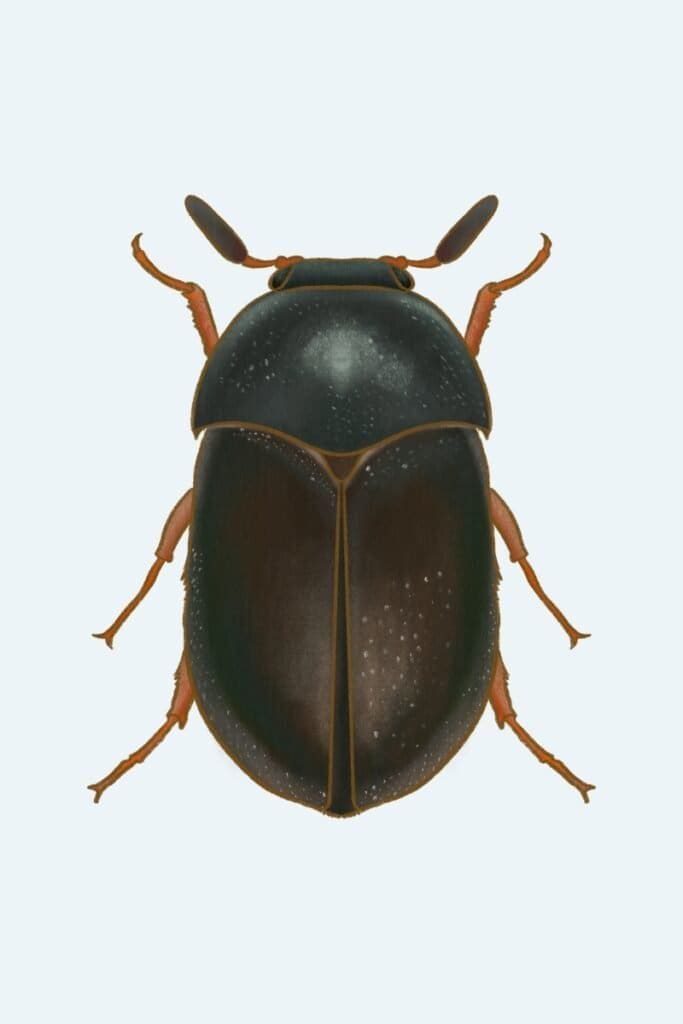
What Are Carpet Beetles?
Carpet beetles are common fabric pests that can cause significant damage to carpets, clothing, upholstery, and stored items. While adult carpet beetles are primarily nuisance pests indoors, their larvae are responsible for the majority of the damage as they consume keratin-rich materials.
Appearance
The adults are small, oval-shaped beetles with hardened, patterned wing covers ranging in color from black to mottled patterns of white, brown, yellow, and orange. Their larvae have soft, elongated bodies covered in bristles or tufts of hair.
Behavior
Carpet beetles naturally live outdoors, where adults feed on pollen and nectar. They enter homes through open doors and windows or crawl through small gaps. In some cases, they hitchhike indoors on freshly cut flowers, clothing, or other materials.
Once inside, females lay up to 100 eggs in warm, undisturbed hiding spots near food sources. Eggs hatch within 7–14 days, and larvae immediately begin feeding on natural fibers, causing damage to items such as carpets, furniture, clothing, and stored foods. The larval stage can last several months to over a year, depending on environmental conditions.
Risks
While the adult beetles are harmless to humans, their larvae destroy items like carpets, clothing, and upholstery by chewing through fibers.
In addition, long-term exposure to larva-infested fabrics may cause carpet beetle dermatitis, which manifests as rashes or welts caused by hypersensitivity reactions to larval hairs.
Identification
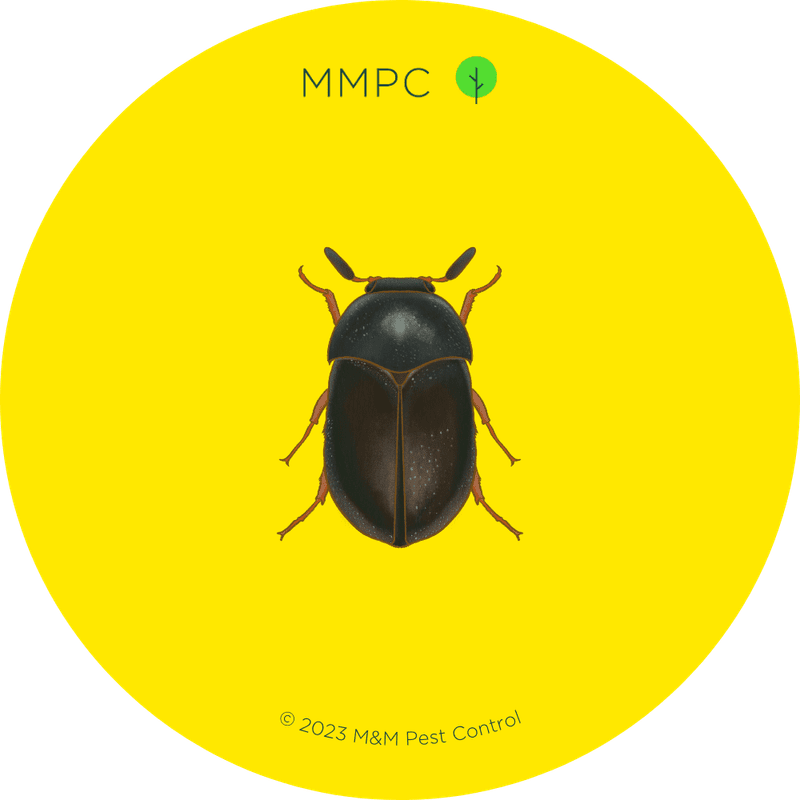
Black Carpet Beetle
Black carpet beetles (Attagenus unicolor) are the most common and most destructive species of carpet beetles, particularly in New York and the northeastern United States.

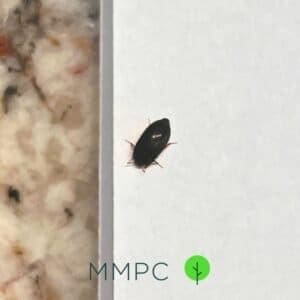

Size: 1/8″ – 3/16″ (3 – 5 mm)
Color: Black or dark brown
Identifying Features:
- Pill-shaped body with white undersides
- Hardened forewings (elytra) that are solid black or dark brown
- Hood-like plate (pronotum) covering the head and thorax
- Short antennae with a 3-segment club
- 6 legs

Larva (Black Carpet Beetle)
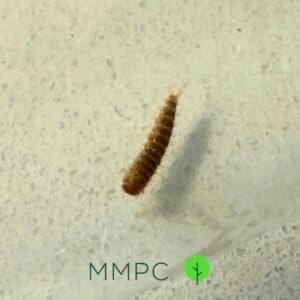
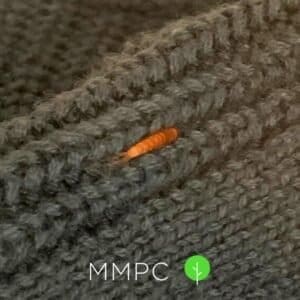
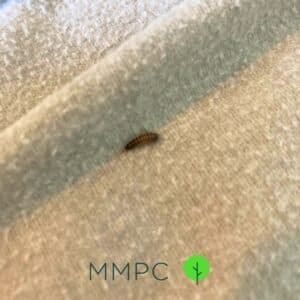
Size: Up to 5/16″ (7 mm)
Color: Golden to dark brown
Shape: Carrot-shaped body with short bristles (setae) and a tail-like tuft of long hairs
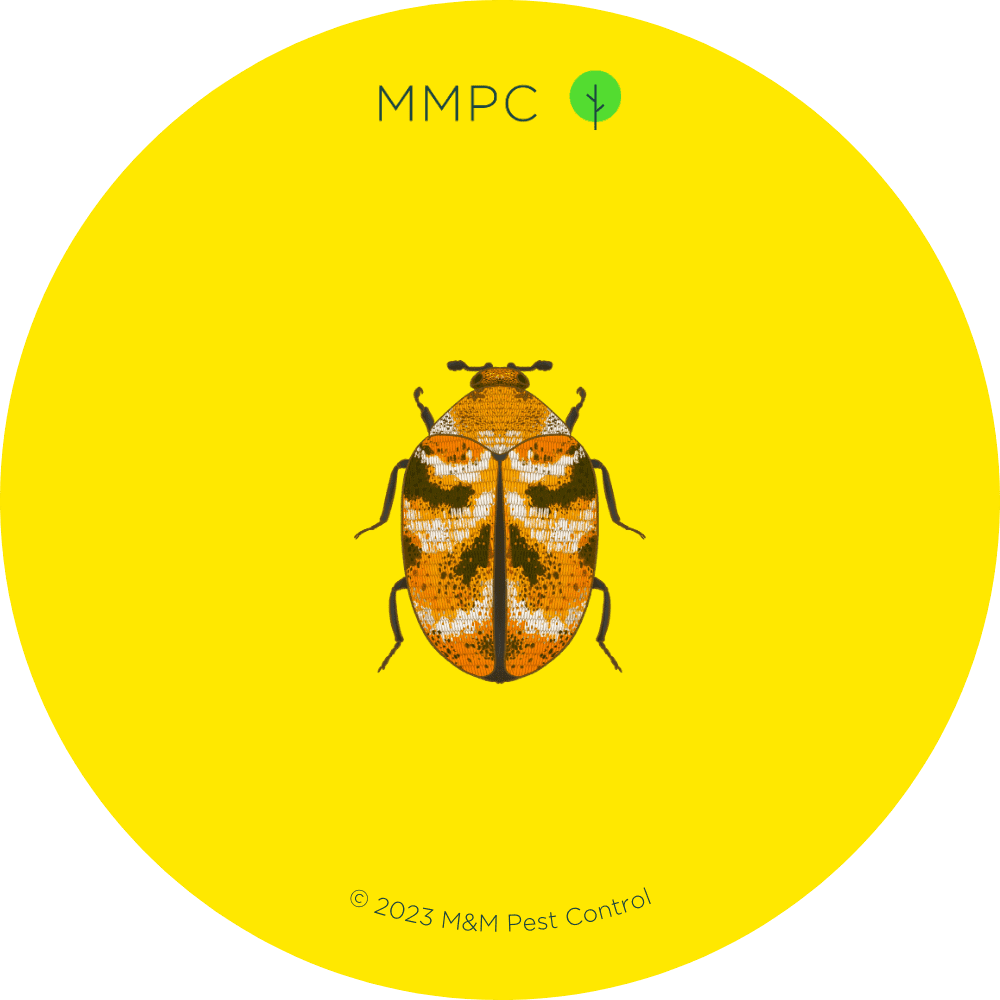
Varied Carpet Beetle
Varied carpet beetles (Anthrenus verbasci) are another common species found worldwide. Their larvae are sometimes referred to as “woolly bears” due to the characteristic tufts of hair on their bodies.
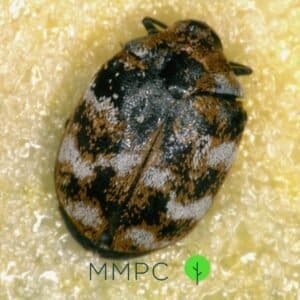
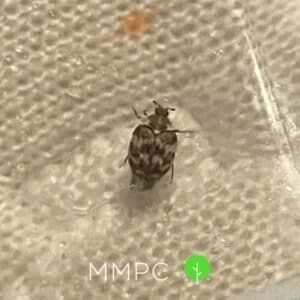
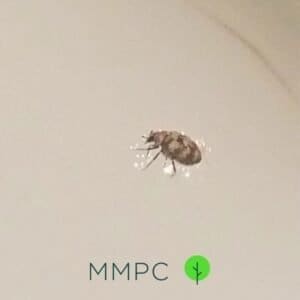
Size: 1/10″ – 1/6″ long (2.5 – 4 mm)
Color: Black with mottled white, brown, and dark yellow patterns
Identifying Features:
- Oval-shaped body with greyish-yellow undersides
- Hardened forewings (elytra) mottled with brown and yellow scales, with 3 zig-zagging bands of white scales
- Hood-like plate (pronotum) covering the head and thorax
- Short antennae tipped with a 3-segment club
- 6 legs
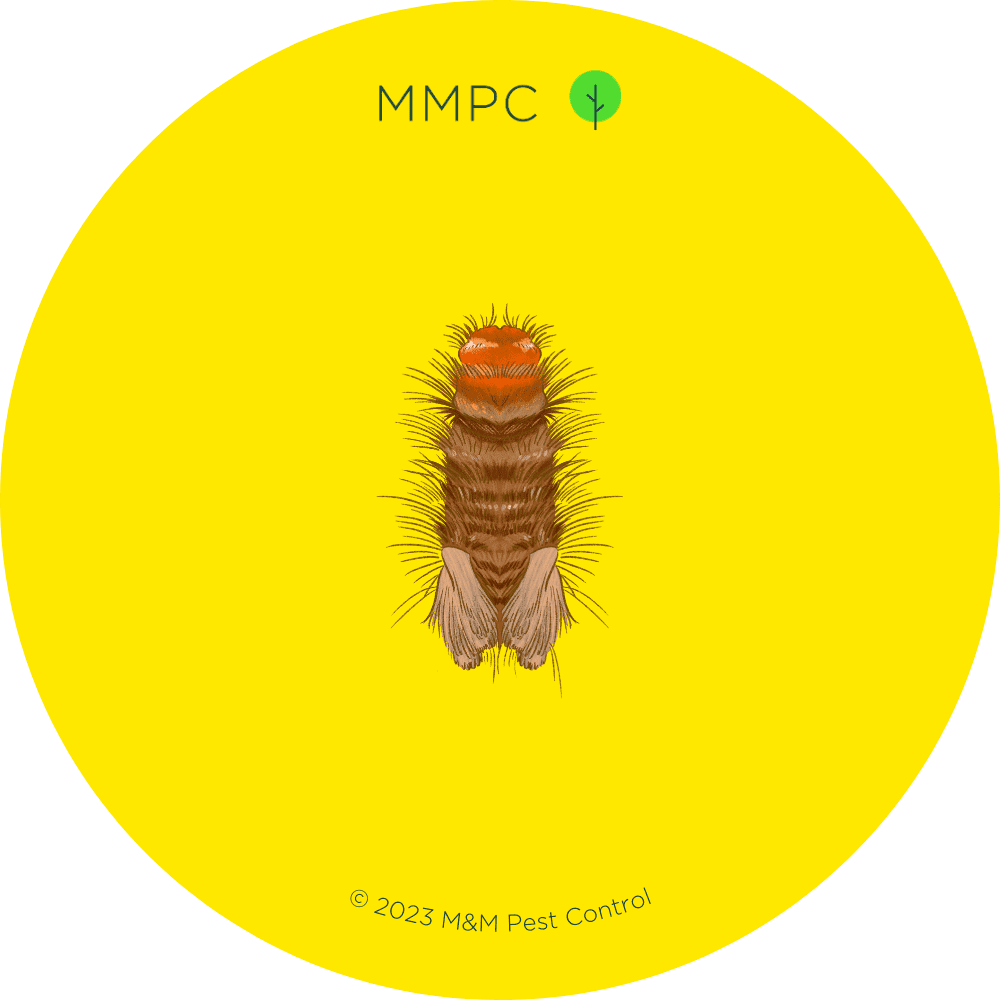
Larva (Varied Carpet Beetle)

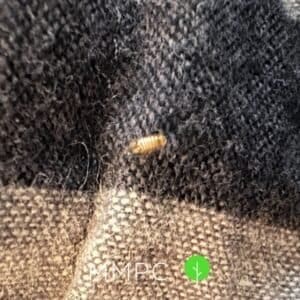
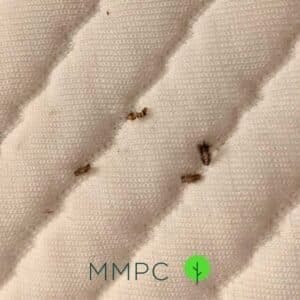
Size: Up to 5/16″ (7 mm)
Color: Brown
Shape: Cigar-shaped body with long bristles (setae) and 3 pairs of dense, backwards-facing hair tufts at the rear
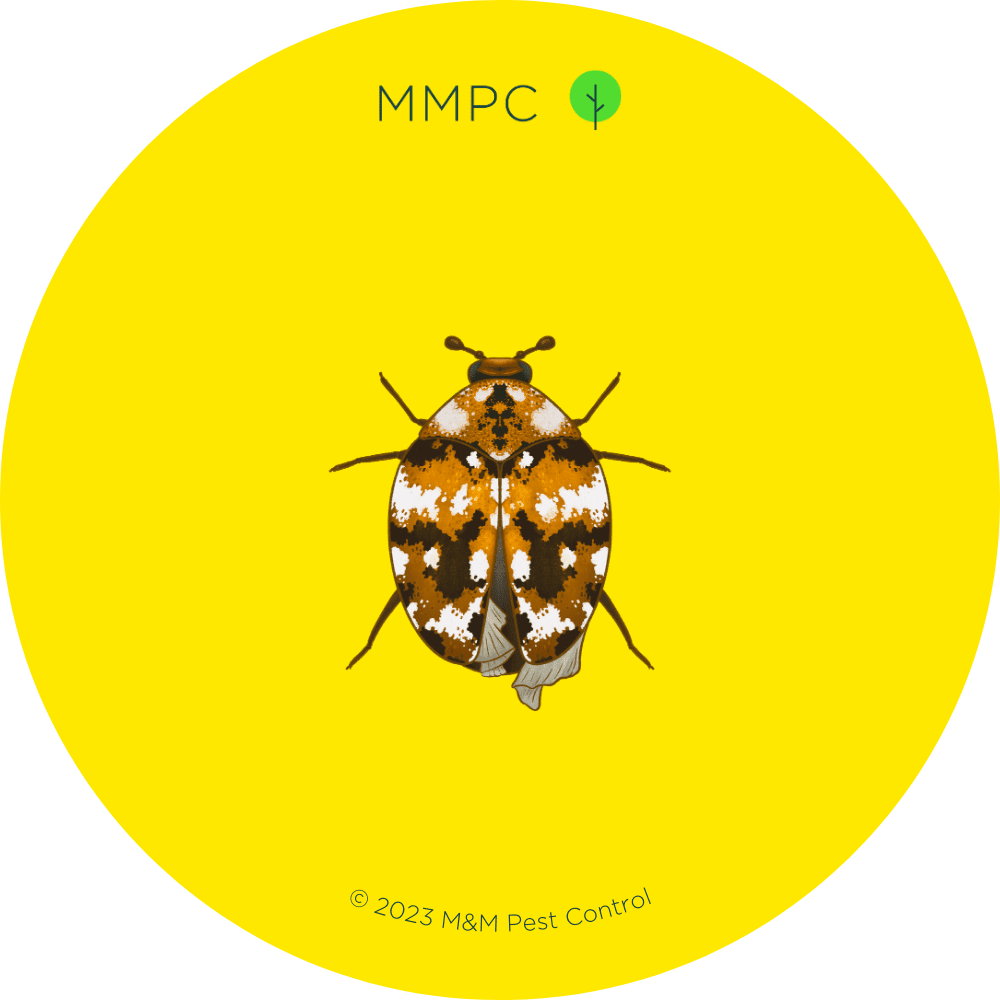
Furniture Carpet Beetle
Furniture carpet beetles (Anthrenus flavipes) are more common in locations with warmer climates, but they can occasionally be found in heated homes and buildings in New York.

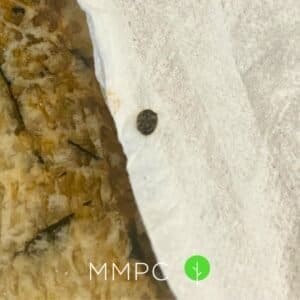
Size: 1/12″ – 1/6″ (2 – 4 mm)
Color: Black with white, brown, and dark yellow patterns
Identifying Features:
- Wide, oval-shaped body with white or yellow undersides
- Hardened forewings (elytra) with symmetrical patches of white, brown, and dark yellow scales
- Hood-like plate (pronotum) covering the head and thorax
- Short antennae tipped with a 3-segment club
- 6 legs

Larva (Furniture Carpet Beetle)

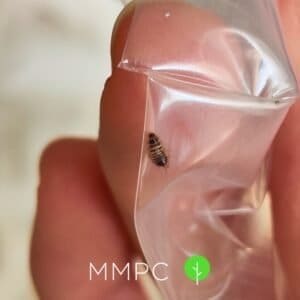
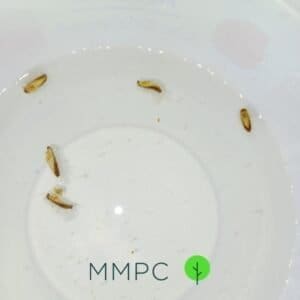
Size: Up to 1/5″ (5 mm)
Color: Brown
Shape: Elongated body with long bristles (setae) and a vibrating bundle of hairs at the rear
Control

How to Get Rid of Carpet Beetles
Carpet beetles can be a persistent problem, but effective management involves a combination of sanitation, environmental treatments, and, in severe cases, professional pest control. The following steps outline how to address infestations, ranging from mild to severe, while preventing future problems.
Minor Infestations
Minor carpet beetle infestations can often be handled with diligent cleaning and careful treatment of affected items.
- Cleaning: Vacuum regularly to remove eggs and larvae from carpets, upholstery, and storage areas.
- Washing fabrics: Wash infested fabrics in hot water (120°F or higher) and dry them on high heat.
- Freezing non-washable items: Seal delicate items in plastic bags and freeze at 0°F for at least two weeks.
- Natural treatments: Use diatomaceous earth or boric acid in areas where larvae are present to dehydrate and kill them.
Chemical Control
For extensive infestations or when sanitation and natural treatments are insufficient, chemical controls may be necessary. If attempting this yourself, use insecticides labeled for carpet beetles, such as those containing pyrethrins, permethrin, or bifenthrin. Always follow label instructions to ensure safe and effective application.
Tips for Prevention
- Storage practices: Store natural fiber items like wool or silk in airtight containers or sealed plastic bags.
- Environmental management: Eliminate bird or rodent nests near your home, as these can attract carpet beetles.
- Regular maintenance: Inspect and clean areas prone to lint buildup, such as closets, attics, and underneath furniture.
- Monitor activity: Use sticky traps to monitor for adult beetle activity, particularly in areas where previous infestations occurred.
FAQs
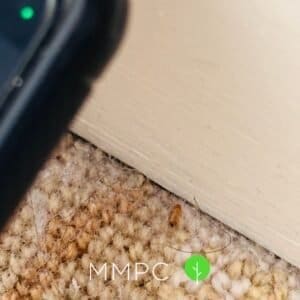
What Causes Carpet Beetles?
Carpet beetles are primarily attracted to natural fibers and protein-based materials such as wool, silk, leather, fur, and feathers. These materials contain keratin, a protein that larvae can digest, making such items their primary food source. Undisturbed areas like closets, attics, and basements provide ideal conditions for carpet beetle larvae to thrive.
Do Carpet Beetles Bite?
No, carpet beetles do not bite humans or pets. However, their larvae can cause irritation or allergic reactions from their bristly hairs, a condition known as carpet beetle dermatitis.
Our Services
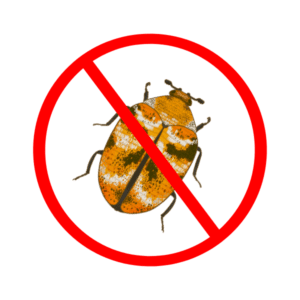

If the infestation persists, professional pest control services may be required. At MMPC, we apply residual insecticides for targeted treatment or, in severe cases, conduct fumigation for widespread infestations. Our experts can also identify structural vulnerabilities, such as cracks or gaps, to prevent future beetle entry.
Need help getting rid of carpet beetles? We are available seven days a week to address your pest control needs.


